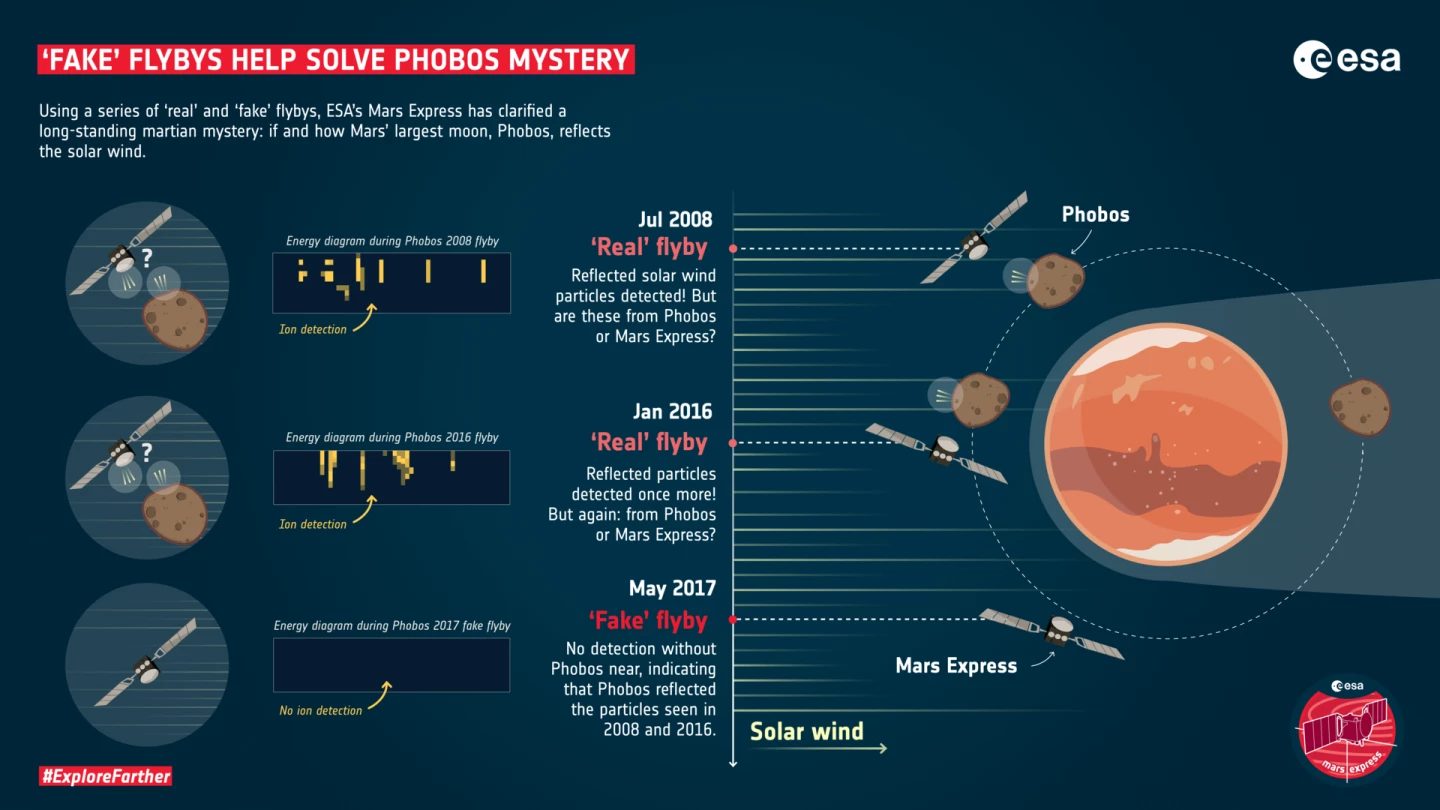By conducting "flybys" of Phobos when it wasn't actually there, ESA's Mars Express orbiter provided researchers with a controlled experiment to learn more about the mysterious, intermittent interaction between the Martian moon and solar winds.
Half a century of studying Mars has produced a long string of discoveries that can be summed up in one simple phrase: Mars is a very surprising planet. Though it's the most Earth-like destination in the solar system, it's so different in so many ways that it's often difficult to get a real grasp about what is going on in the vicinity of the Red Planet.
One case in point is how the solar winds interact with Mars and its two moons, Phobos and Deimos. In the Earth system, it's well-established that the Moon reflects charged particles from the Sun. Phobos, though much smaller than the Moon, is also a rocky body without a magnetic field that is orbiting a terrestrial planet located in the inner solar system, so it should reflect these particles in a similar way.

However, when Mars Express, which went into Mars orbit in December 2003, carried out repeated flybys of Phobos, it only saw evidence of such reflection – or backscattering – in 2008 and January 2016. Logically, Phobos is being bombarded by the solar winds, so the question is, what happened to the particles?
One possibility is that the charged particles aren't being reflected at all and the detection was an artifact of Mars Express, which may have reflected them at itself when it moved its solar array and sensors to focus on Phobos.
To test this hypothesis, mission control ordered Mars Express to carry out three more flybys in 2017 that were the same as the previous ones, but with a major difference: Phobos wouldn't be there. In other words, these were fake flybys.

These fake flybys observed that the spacecraft wasn't reflecting the solar wind and the area where Phobos was supposed to be (but wasn't) read as empty space. ESA says this was essentially the same as a laboratory experiment with the fake flybys acting as a control for comparison to the real flybys, allowing the scientists to remove Mars Express as a source of the reflection.
While reassuring, this still leaves open the question of why the spacecraft is only seeing the backscatter from Phobos intermittently. This may be due to the difference in sizes of Phobos and the Moon, an undetected magnetic field on Phobos, a difference in surface composition, or other factors.
"Overall, the intermittent particles are likely being reflected from the Phobos’ surface, but we can’t rule out another mysterious origin," says Yoshifumi Futaana of the Swedish Institute of Space Physics (IRF). "However, the 'fake' flybys helped us understand the situation significantly better, explicitly showing that Mars Express was not the source. To know more, we need more Mars Express flybys of Phobos in various configurations. Even if no reflected particles are seen during those flybys, even a lack of signal will provide valuable statistics."
The research was purchased in JGR: Planets.
Source: ESA





